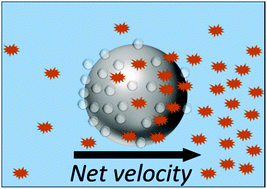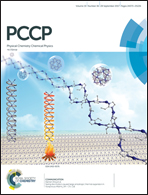Surface fouling as a mechanism for chemotaxis in isotropic catalytic swimmers†
Abstract
We present microscopic models for surface fouling of an isotropic spherical catalytic microswimmer at and away from equilibrium and show how a foulant gradient can induce chemotactic behavior. Our simulations establish that the presence of foulant manifests itself in two ways: as a braking effect on propulsive particle motion, and as a drift term which probes the foulant concentration gradient. Our results suggest that, while foulant gradients are unlikely to be directly useful for chemotactically directed particles, they nevertheless exert a non-negligible influence on particle motion under a wide range of conditions.



 Please wait while we load your content...
Please wait while we load your content...